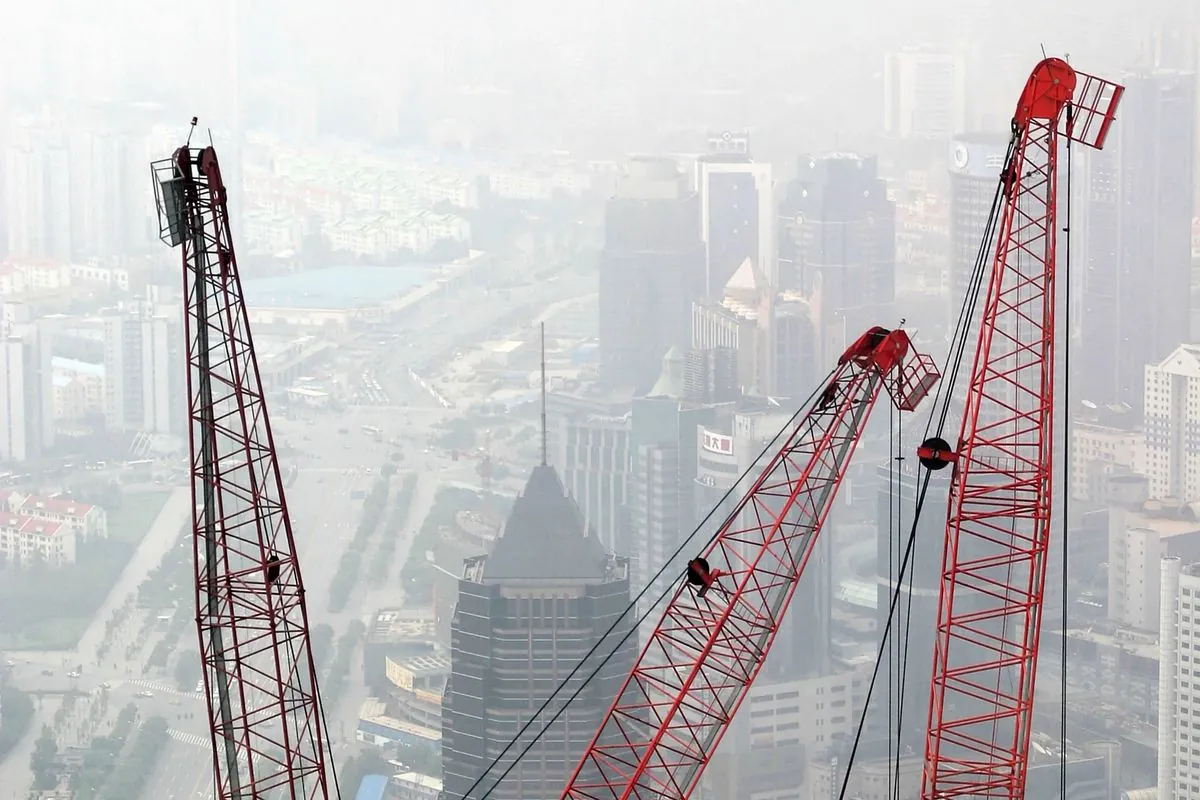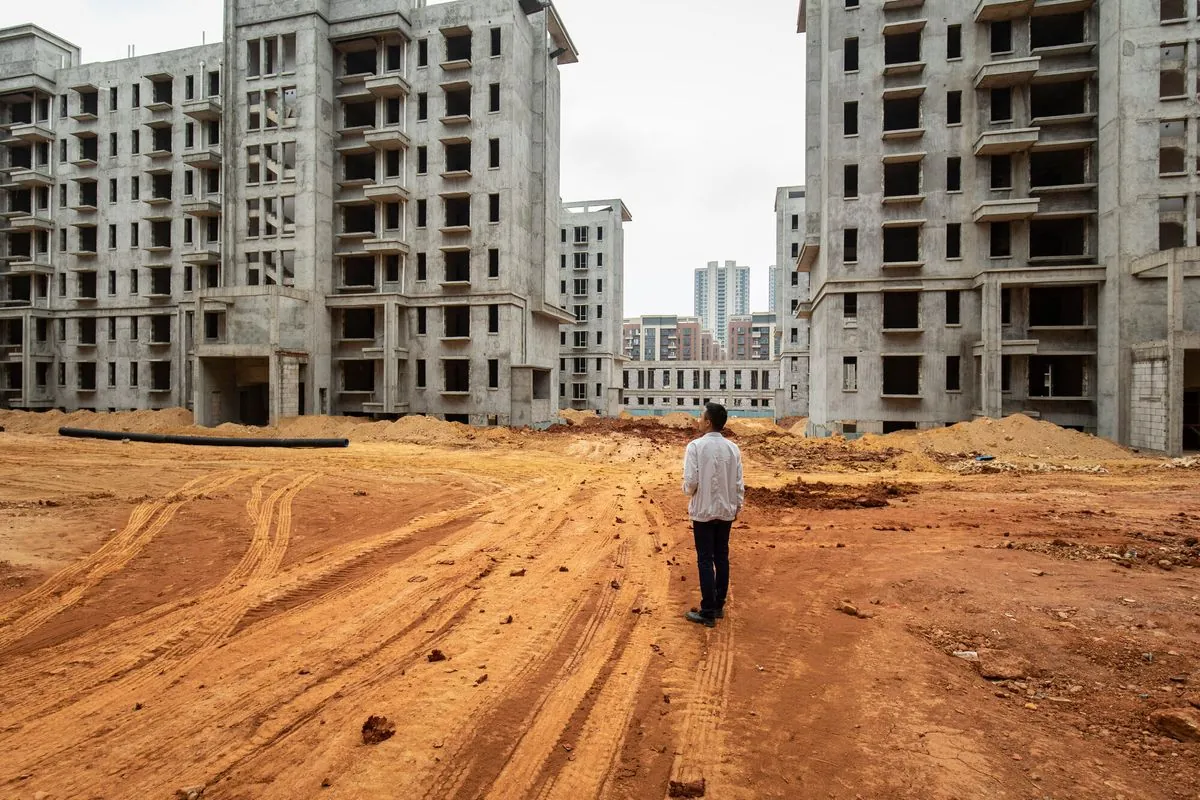China's Economic Growth Target Faces Headwinds Amid Property Slump
China's 2024 GDP growth target of "around 5%" encounters challenges due to property market decline. UBS revises forecast downward as Beijing balances short-term goals with long-term economic plans.

China's economic landscape is facing significant challenges as it strives to meet its 2024 GDP growth target of "around 5%". This goal, once a rigid benchmark, now serves more as a flexible planning tool for Beijing's policymakers. The shift in approach reflects the complex economic realities China is navigating, balancing short-term fluctuations with ambitious long-term objectives.
The world's second-largest economy, which surpassed Japan in 2010, has encountered headwinds primarily due to a deeper-than-expected property market slump. This sector, accounting for approximately 30% of China's GDP, has been a crucial driver of economic growth. The real estate downturn has persisted despite government efforts to stimulate the market, including easing mortgage rules and repurposing unsold homes for welfare housing.
Economic forecasts have mirrored these challenges. UBS, a prominent financial institution, recently adjusted its growth projection for China. Initially upgrading its forecast from 4.6% to 4.9% in April 2024, the bank has now revised it back to 4.6%. This fluctuation in predictions underscores the volatility and uncertainty surrounding China's economic trajectory.

China's long-term economic ambitions remain ambitious. President Xi Jinping has articulated a vision of doubling the economy or per capita income by 2035. To achieve this goal, China would need to maintain an average annual growth rate of around 4.8% for 15 years. This target is particularly challenging given recent economic performance and global uncertainties.
The Chinese government's response to these challenges will be crucial. Potential policy reactions may include increased fiscal spending on welfare to boost consumption. Such measures would aim to prevent short-term economic hiccups from evolving into structural problems that could derail long-term growth plans.
China's economic journey since the reforms initiated by Deng Xiaoping in 1978 has been remarkable. The country has achieved significant milestones, including joining the World Trade Organization in 2001, becoming the world's largest exporter in 2009, and seeing its currency, the yuan, become an IMF reserve currency in 2016. The Chinese middle class, now estimated at over 400 million people, has been a key driver of economic growth and transformation.
As China navigates these economic challenges, it must also address broader issues such as urbanization, which reached 64.7% in 2023, and the need for sustainable growth models. The government's stake in many of the country's largest companies adds another layer of complexity to economic management and reform efforts.
The coming months will be critical in determining whether China can maintain its growth momentum and stay on track with its longer-term economic goals. The global economic community will be watching closely as Beijing balances the need for immediate economic stability with its vision for sustained, robust growth in the years to come.


































